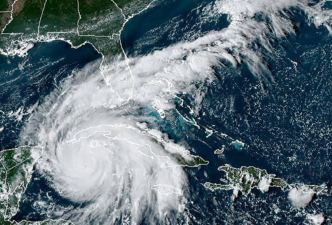How Does Climate Change Influence Hurricanes?
Researchers reported in a report published in Environmental Research: Climate that climate change increased hurricane maximum wind speeds by an average of approximately 29 km/h from 2019 to 2023.
- Simulation results further indicate that future human-induced climate warming will significantly slow the movement of hurricanes, particularly in densely populated mid-latitude regions. For example, near New York City, the forward speed of hurricanes is projected to slow by approximately 3.2 kilometers per hour, equivalent to 10% to 20% of the current hurricane speed.
- The movement speed of tropical cyclones is influenced by a complex array of factors, including environmental guiding air currents, the evolution of the typhoon's internal structure, the meridional gradient of Earth's rotational vorticity, and underlying surface conditions. However, it's generally believed that environmental winds are the key factor in determining a cyclone's trajectory, while background winds primarily influence its speed.

- Global warming is weakening the summer tropical circulation, which may be one of the reasons for the slowing of hurricanes. Yu Jinhua, a professor at Nanjing University of Information Science and Technology, pointed out that rising temperatures are causing the westerlies, the powerful air currents that blow through mid-latitudes, to advance poleward, accompanied by weaker mid-latitude weather disturbances. These combined changes could lead to slower hurricane movement over densely populated areas such as Asia and North America.
- Slower hurricanes mean they linger longer in a given area, leading to significantly increased precipitation. This excess precipitation can easily cause severe flooding and waterlogging, especially in low-lying areas. Sustained strong winds also pose a risk, potentially causing severe damage to buildings exposed to prolonged strong winds. Several slow-moving hurricanes in the United States in recent years have caused significant damage. For example, in 2017, Hurricane Harvey lingered near eastern Texas for nearly a week, causing massive damage to the region totaling $125 billion.




